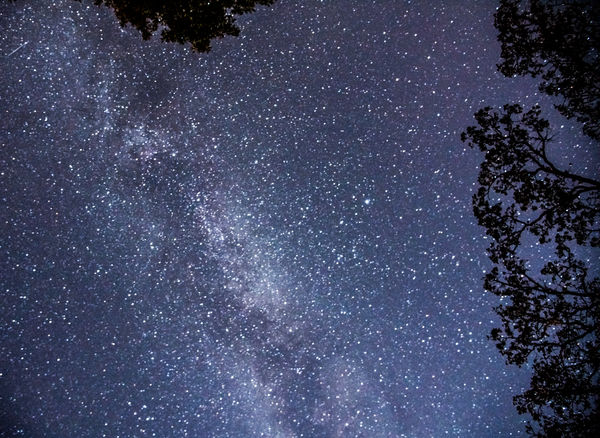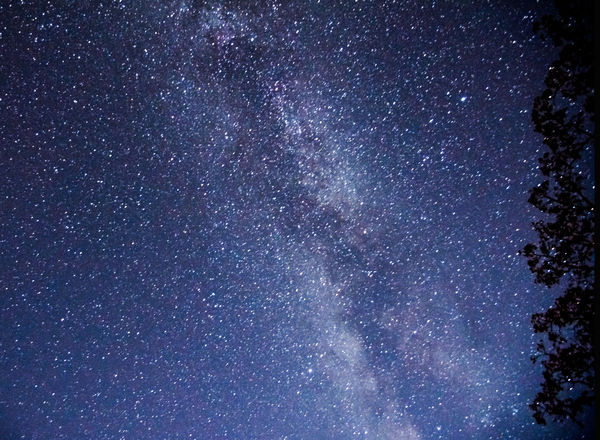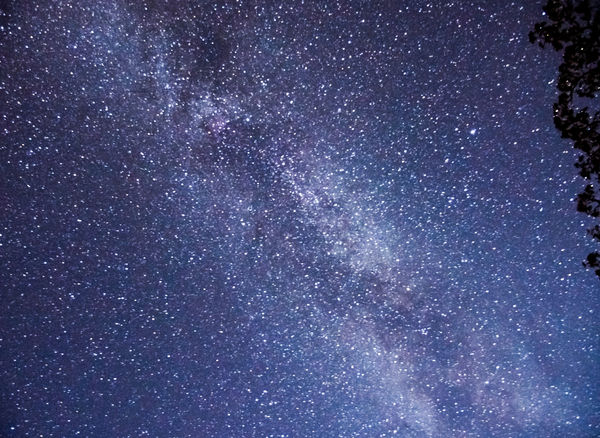First Attempt At Milky Way...HELP
Oct 19, 2015 10:34:20 #
First try at the Milky Way...Normally wildlife so this is all brand new...literally shooting in the dark...
Any advice and constructive criticism would be greatly appreciated!
Any advice and constructive criticism would be greatly appreciated!
Oct 19, 2015 11:25:08 #
ggttc is lucky to have a terrain unpolluted by stray lights. I downloaded #1 to see it better on my iPad and it seemed the stars were somewhat out of focus, but a part of that could be due to the earth's rotation. Trying to focus on a LCD or EVF is problemmatical in that they both show far fewer pixels than the sensor captures. All of my tries to get 'sharp' stars always fall short of wants.
Oct 19, 2015 11:36:11 #
John_F wrote:
ggttc is lucky to have a terrain unpolluted by stray lights. I downloaded #1 to see it better on my iPad and it seemed the stars were somewhat out of focus, but a part of that could be due to the earth's rotation. Trying to focus on a LCD or EVF is problemmatical in that they both show far fewer pixels than the sensor captures. All of my tries to get 'sharp' stars always fall short of wants.
At a SS of 30secs...were were getting some star trails starting to develop...had to hunt to get some focus point....and at F4 I am sure there are some DOF issues...Like I said first attempt...so at best it was a learning experience....thanks for the comment.
Oct 19, 2015 15:33:35 #
ggttc wrote:
First try at the Milky Way...Normally wildlife so this is all brand new...literally shooting in the dark...
Any advice and constructive criticism would be greatly appreciated!
Any advice and constructive criticism would be greatly appreciated!
This is not bad for a first try. The stars are very close to in focus, but if you can get it closer to perfect focus, it will make a big difference. There is some noise that could be reduced in post processing. For single images, I use DxO Optics Prime (elite version) and use their Prime Noise removal. If shot in RAW, you could slide WB more towards yellow and diminish some of the blue. What focal length is this? And is that a crop or full frame sensor?
Some cameras are a lot easier to focus on stars than others. I start with a bright star and use the focus magnifier to see what I am doing and adjust for the smallest diameter for the star. At the best point of focus, the dimmer stars will be come visible and at that point, I turn my focus to a dim star and very carefully rock the focus back and forth a very, very tiny amount and adjust for the dim star to be its brightest. Even the slightest misfocus will make the star completely disappear. When I focus this way, the dim stars turn out as pin points. The bright ones may bloom a bit.
But again, not every camera can do this. I am using the LCD to see the results, and it is magnified.
With Sony cameras, I get perfect focus every time.
It does look like you have a dark location. This is as important as perfect focus. If the lens is a good one, you can shoot wide open. Some lenses show too much distortion wide open. Adjust ISO to the max you can live with the noise. I find that it might not be the same from night to night. Adjust shutter speed to minimize star trails.
There is a product called Focus Magic that can remove star trails of up to about 20 pixels. This can make a big difference and allow you to shoot longer.
For best noise removal, you need to stack images in a product such as DSS (Deep Sky Stacker) and its free. You can't use this SW and have tree branches since with each shot, the star background moves a little. The result is aligned stars and really fuzzy tree branches.
Do not try to work with depth of field with stars. Anything other than perfect focus is not good for stars. They are point sources and not extended objects and being out of focus, even by a tiny amount, makes for fat stars, and a lot less of them.
Good luck.
Oct 19, 2015 16:02:33 #
Using a d810 and a Nikkor 24-120 VR II lens focal 24mm
Again this is baby steps for us...shot at the Hiwasse
Bird refuge in TN...which is famous as a crane migration spot...almost had to under the tripod because the lens was almost vertical.
Thanks for the advice!
Again this is baby steps for us...shot at the Hiwasse
Bird refuge in TN...which is famous as a crane migration spot...almost had to under the tripod because the lens was almost vertical.
Thanks for the advice!
Oct 19, 2015 16:19:57 #
ggttc wrote:
Using a d810 and a Nikkor 24-120 VR II lens focal 24mm
Again this is baby steps for us...shot at the Hiwasse
Bird refuge in TN...which is famous as a crane migration spot...almost had to under the tripod because the lens was almost vertical.
Thanks for the advice!
Again this is baby steps for us...shot at the Hiwasse
Bird refuge in TN...which is famous as a crane migration spot...almost had to under the tripod because the lens was almost vertical.
Thanks for the advice!
This should be a really good camera and lens to use for this. I have been using at 24-70mm f2.8 on a full frame camera and it is producing wonderful results. You can try focusing at a lower elevation and then shoot straight up. Once you are in focus, all stars are in focus, provided you don't bump it after setting the focus.
I have the LCD screen that pulls out and can be angled which makes those straight up shots easier.
On you live view screen, can you magnify? If you can do that, it really helps.
I would like to be at the Hiwasse Bird refuge in TN too! I like to shoot birds also. 5 more months to retirement, and then I will have more time for things I like to do.
Oct 19, 2015 16:47:32 #
ggttc wrote:
First try at the Milky Way...Normally wildlife so this is all brand new...literally shooting in the dark...
Any advice and constructive criticism would be greatly appreciated!
Any advice and constructive criticism would be greatly appreciated!
Welcome to the Astropotography Forum and a beautiful start.
At 24mm focal length I would shot a little faster, say 15 sec and you will have a little better focus.
Then use your Post Processing to bring out the stars.
Craig
Oct 20, 2015 19:23:58 #
I shoot with a 11-16mm lens, and I keep the shutter around 25 seconds. That is what works best for me. It looks like you have a great start, The main key with MW photos is in the post processing. Also, set your focus up in daylight mark your lens, that way you are ready to go when the sun goes down.
If you want to reply, then register here. Registration is free and your account is created instantly, so you can post right away.







